| 1 | Europe’s most endangered viper |
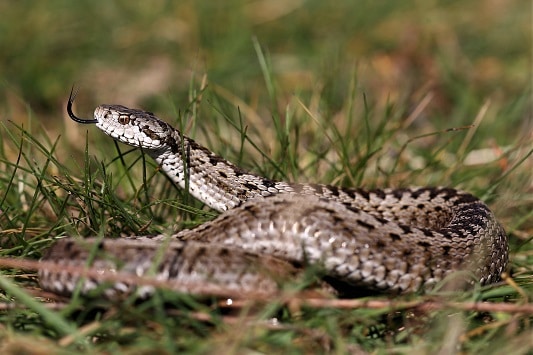
In Europe, there’s a venomous snake which is being pushed back on all sides, and is far trickier to find than its adder or asp viper cousins. This snake is the meadow viper (Vipera ursinii), a mountain-dweller which now has an official conservation tag of “vulnerable” from the IUCN.
Meadow vipers have been declining for decades now, and have extremely narrow habitat requirements compared to other European vipers. Firstly, this species is allergic to any form of forest, from moderately dense to dark and shadowy.
Instead, meadow vipers live in open valley meadows (duh) in mountains ranges, and high altitude grassy plains with grazing animals and melting snow patches. These rugged spots are gradually being conquered by mankind, and consequently, the meadow viper has a very patchy range across Europe.
Technically, their territory is large, stretching from France in the west to Romania in the far east. Unlike the adder though, this isn’t a continuous unbroken stretch. Meadow vipers are divided into small, ever-shrinking pockets, sometimes highly specific valleys or even individual mountain slopes. These can be separated from the next pocket by dozens of industrialised towns and highways. It’s rare to encounter a meadow viper in the wild, and almost inconceivable that a gardener picking his beans one morning could accidentally disturb one.
| 2 | The smallest European viper |
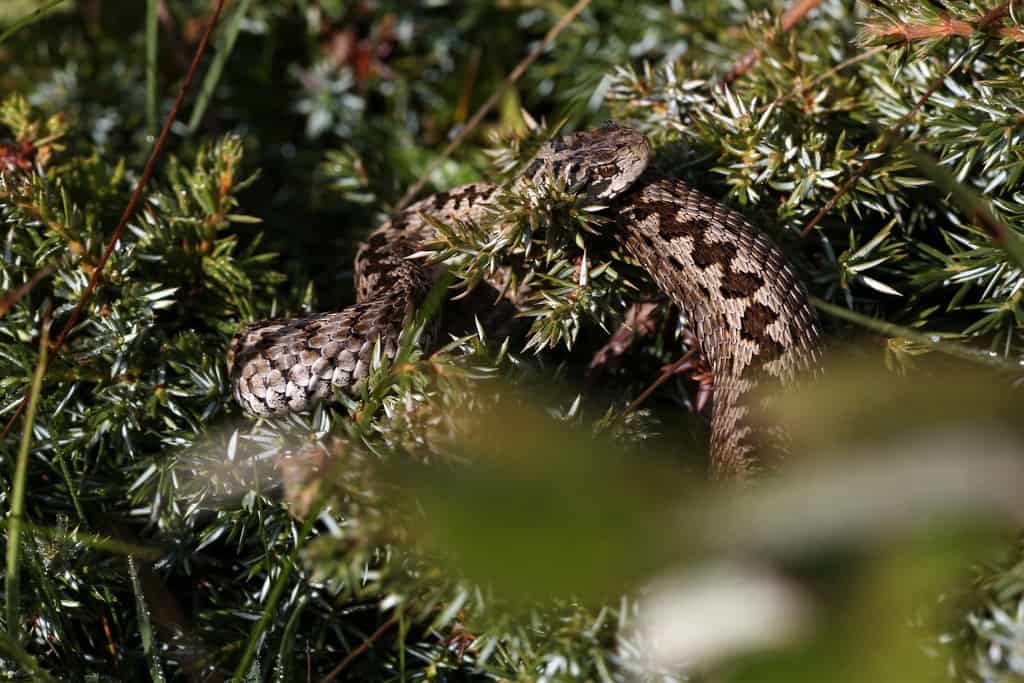
The meadow viper is the smallest viper in Europe, maxing out at 65cm, and usually measuring 40-50cm. Females are larger than males, and an obvious difference to adders or asp vipers is that its snout is less upturned.
The meadow viper’s patterns are noticeably stronger than the asp viper, a dark wavy zigzag that continues all the way down its spine. Their head is narrower than its neighbour vipers, and there’s also a black line connecting the eye and corner of mouth, on each side.
The meadow viper has small eyes, with vertical pupils, and youths of this snake are more brightly coloured than adults. A meadow viper’s patterns rarely vary – the thick zigzags are always in place. The variation is in the colour. Meadow vipers can either be light grey with dark grey patterns, or light brown against dark brown. Meadow vipers have rough scales, and are quite angry-looking when viewed up close. Its belly is a similar varying shade of grey.
| 3 | Found at over 3000 metres |
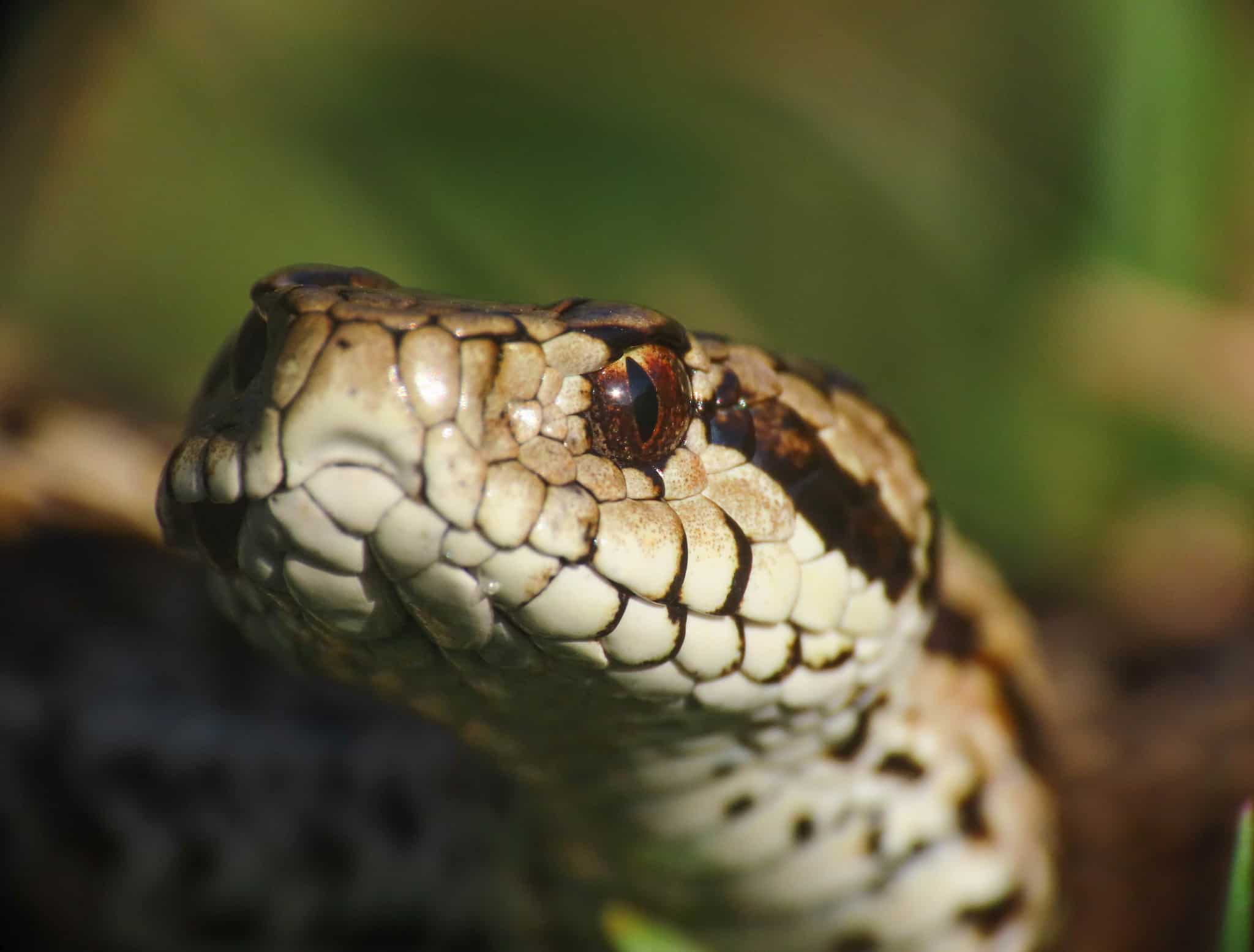
The meadow viper has two types of habitat in their mountainous realms: high altitude and low altitude. The former are rugged alpine meadows, always above the tree line. These habitats are unshaded, and have a diverse flora of grasses, but few herbaceous plants.
These are the kind of remote alpine places which hikers flock to in summer, and where snow patches remain well into spring. Meadow vipers are particularly attracted to juniper bushes, with low spreading mats of vegetation that provide shelter. These high habitats can reach 3000 metres, and they tend to stick to warmer south facing slopes.
Then there’s the lower habitats, ranging from 300 to 800 metres. These are more scenic, grassy meadows, giving them their name. These lower altitude vipers hate dark forests, and stick to grassland with no shade. They even dislike shrubs, and require rich diverse grassland with multiple species. Grass tussocks are an all-important habitat requirement, as they provide shelter. These are fields you might drive past in lower alpine valleys on the way from an airport, sometimes grazed by cows.
| 4 | Threats: animal grazing and agriculture |
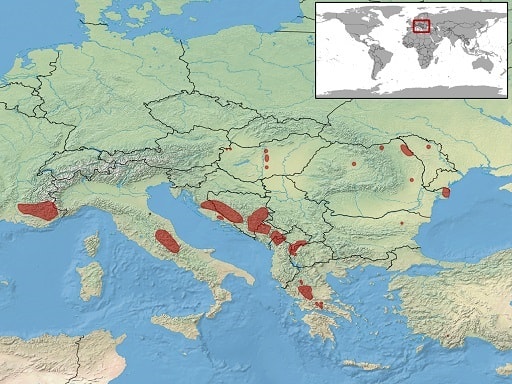
Meadow vipers are the opposite of Amazon rainforest snakes where logging hurts them. This species is allergic to forests, and in certain areas of France and Italy, forests are actually spreading, pushing their scenic meadows back. The conversion of old fields to agricultural monoculture is also hurting them. At high altitudes, a big problem is the removal of juniper bushes, which aren’t consumed by sheep and offer no value to shepherds.
If done right, animal grazing can help the meadow viper, by preventing their grassy fields from overgrowing. However, an overload of cows and sheep can damage the diversity of vegetation they require. Controlled field burning wreaks havoc on meadow vipers, as they have no instinct to dodge the licking flames. There’s also haycutting of meadows, which was beneficial when performed by hand. These days, heavy machinery drives through the fields, damaging the vegetation structures beneath.
Meadow vipers are affected by a dozen small factors combing into one, including pesticide drift, fearful killings, and surface runoff of agrochemicals and fertilisers. Pollution doesn’t kill the snakes directly, but severely damages their insect prey, the base of sustenance they thrive on.
| 5 | Rampaging wild boars |
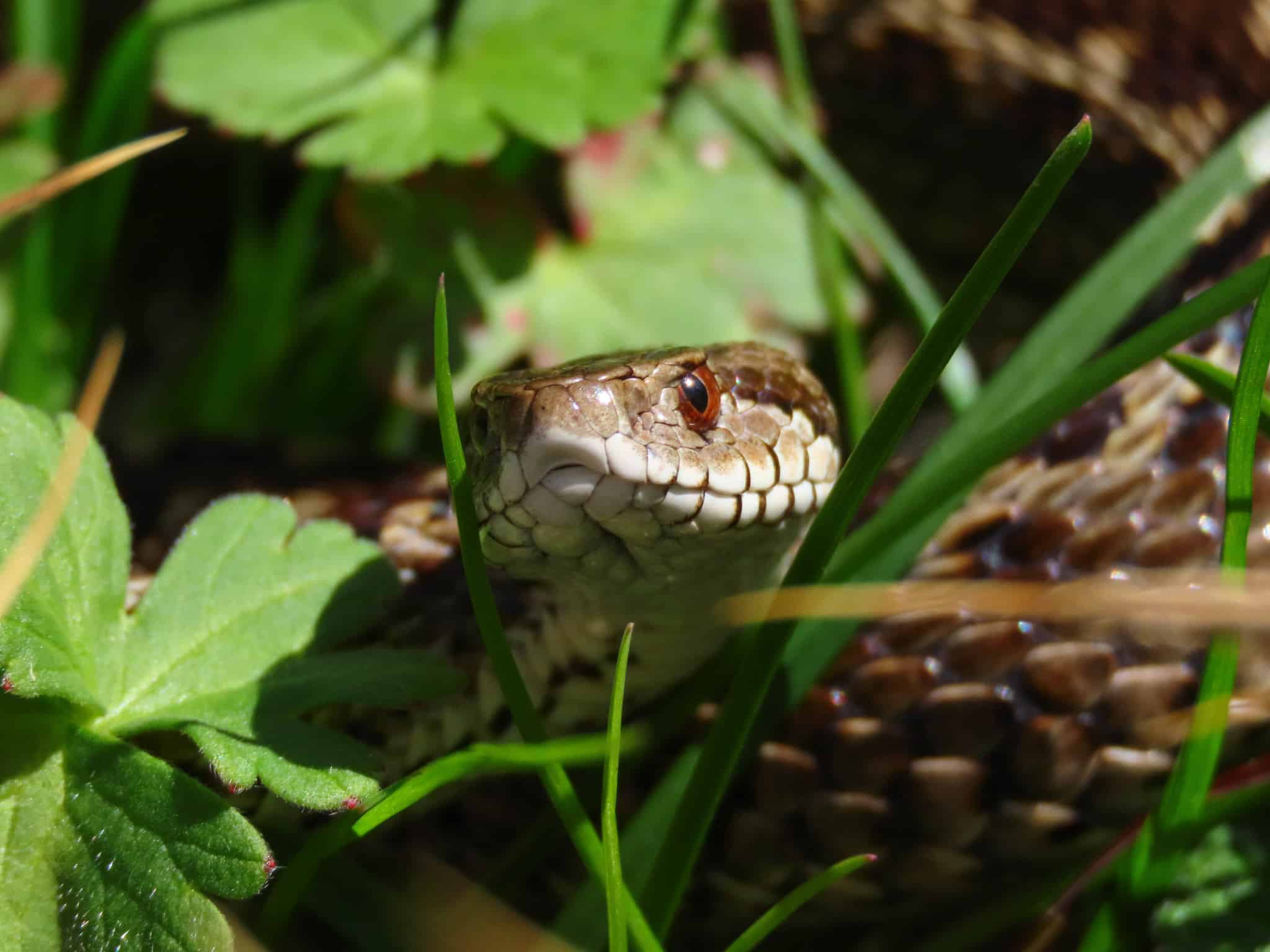
Another pressuriser is that the existing meadow viper habitats are fragmented, and unable to link and replenish each other. It only takes a single autobahn through a valley to separate two decent habitats, making each one exponentially more likely to die. Two fields of 100 vipers are far more likely to die off compared to if they linked up and had 200.
Wild boar are also a surprising problem. They’re taking control in certain French and Italian valleys, and wreak particular havoc on the vegetation structures the vipers need. There’s also evidence they eat the meadow viper. An Italian study found that when wild boar invade an area, snakes significantly fall, including asp vipers, grass snakes, and green whipsnakes.
Some meadow viper populations are already extinct, such as in eastern Austria. In Serbia, the meadow viper is known only from one location: Mokra Gora Mountain. Italy hosts populations both in the alps and central Apennine mountains. In the latter, the Duchessa Mountains and the Majella Massif colonies are at greatest risk of vanishing, while the Campo Imperatore valley has the strongest colony.
Despite the gloom and doom, European conservationists are on the case. One measure they recommend is building electric fences around confirmed habitats, to keep wild boar out.
| 6 | Diet: grasshoppers and crickets |
Being so small, the meadow viper has the rarest diet of the European vipers: insects. In their high altitude green grasslands, they mainly prey on members of the Orthoptera family, which includes grasshoppers, locusts and crickets. Like lined snakes with earthworms, they’re most likely attuned to chemicals and scent molecules produced by these insects. They particular prey on grasshoppers and crickets from July to September, when their populations in grassy meadows vastly increase. In spring, meadow vipers will eat slugs, caterpillars, spiders and even wasps.
A study compared 3 remaining meadow viper habitats in Italy: the Duchessa Mountains, Majella, and Gran Sasso national parks. The Orthoptera insect family dominated their diets in all three. If large enough, meadow vipers will prey on small mammals as well, particularly in spring.
In captivity, meadow vipers will always keep their food in their mouths for a few minutes before swallowing, whether alive or dead. Scientists observed the same thing in the wild, when hunting grasshoppers. The meadow vipers held the twitching insect in their jaws, until the venom took effect and it was completely immobile. Then they gulped them down.
| 6 | Nasty venom, but survivable |
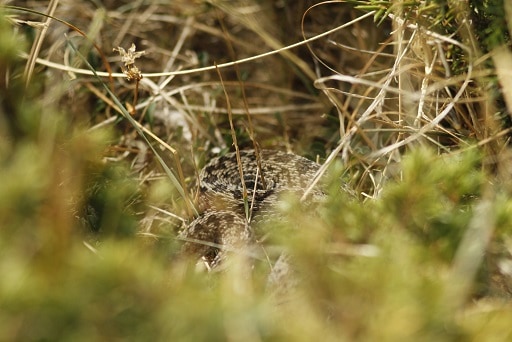
Meadow vipers may be small, but they’re not calm or shy. They have a nervous demeanour, and their hiss can be heard from several metres away. This gives them away when they’d normally be obscured from view by tussocks. Consequently, their personality contributes to their endangered status, as hikers sometimes kill them in fear. A keeper reported that his meadow vipers were still watchful and irritable after two years in captivity, even with a healthy supply of food tossed to them.
Bites are rare in humans, firstly because they’re not encountered commonly. Secondly, the meadow viper has fangs measuring just 1-3mm, which inject a small venom yield of 1.4mg. Nevertheless, the venom itself is decently potent at LD50 2.17mg, almost matching a cottonmouth (2.04mg).
A study covering 64 human bites found that 13% of victims experienced massive swelling spreading up the limp, and 6% experienced necrosis, rotting of the skin. The meadow viper injected venom in 45/64 bites, and recovery time varied from 12 hours to 2 weeks. Systematic effects across the body, such as spontaneous bleeding, are very rare. However, a few people experienced dizziness and falling blood pressure.
| 7 | Tailored venom against insects |
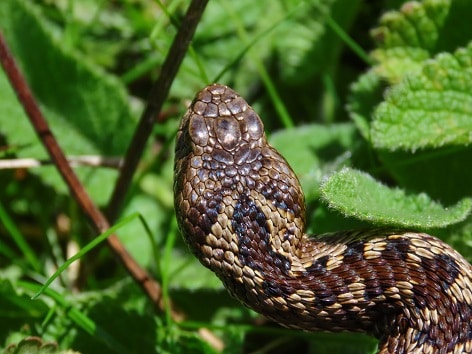
The meadow viper’s venom is specially tailored against insects. It is insecticidal, and is 5 times more potent against crickets compared to the feared horned viper of Turkey. With mice, the reverse is true. The venom contains over 25 proteins, and the single most abundant toxin class is the metalloproteinases, making up 55%. These are responsible for the meadow viper’s strongly haemorrhagic properties in prey. They attack the smallest blood vessels, dissolving proteins in the membrane of the capillary wall, particularly type 4 collagen. The result is that capillaries can no longer stand the pumping pressure and burst, causing spontaneous bleeding. This happens in small prey, but the venom is too weak to get that far in humans.
The venom also has neurotoxic properties, which aren’t common in European vipers. Animals bitten by the meadow viper first show anxiety, then convulsions and spasms, and then death. Despite the 25 proteins identified, meadow viper venom is significantly simpler than Turkey’s horned viper (Vipera ammodytes), with twice as many toxins identified.
The 2-3mm fangs are the shortest viper fangs in Europe. The adder possesses 4-6mm snappers, while the horned viper outstrips the competition at 8–12 mm.
| 9 | Comparison: asp viper |
One 2009 study analysed both meadow vipers and asp vipers in the same area, Gran Sesso in central Italy. The asp vipers were common at 1200-1900 metres, while the meadow vipers mainly appeared at over 1650 metres. This left 250 metres where they overlapped, giving a revealing window into how their lifestyles differed.
On the same mountain, the meadow viper was more likely to be found in open ground, with short grass and few stones, and near their beloved juniper bushes. The asp viper was vastly more common near stone walls or stone piles, or within forests.
The diet was compared on this mountain as well. When living side by side, the asp viper acquired 80% of its diet from mammals, while the meadow viper acquired over 90% from grasshoppers, locusts and crickets (the Orthoptera family). The asp viper didn’t dabble in insects at all, and its main prey species were woodmice and European snow voles. The meadow viper ate a handful of mammals and reptiles, including snow voles and common wall lizards.
These vipers lived in the same location, so their habitat and dietary preferences are clearly innate. Depending on which viper you’re reincarnated as, a very different lifestyle awaits you.
| 10 | Dislikes intense sunlight |
Meadow vipers have particularly discerning taste buds. While they generally love crickets, they refused one that originated from southeast Asia – the house cricket (Acheta domesticus). The scent molecules were clearly foreign to them. When scientists raised a group of meadow vipers in captivity, none would eat before week 5 without being forced. Two vipers waited until week 10 to start eating.
Another rarity for European vipers is that the meadow viper continues to eat while pregnant, even swallowing hamsters a few days before birth. Meadow vipers are able to slither around high altitude spots where there’s still patches of melting snow in May, so they probably have a higher cold tolerance than most snakes. They dislike extreme heat, and despite living in open areas, they’ll always avoid excessive sunlight by staying close to their juniper bushes. Meadow vipers also like to take refuge in grassland rodent burrows.
Male meadow vipers never eat before the end of the mating season. Despite its respectable venom, they sometimes don’t bother using it on prey, particularly grasshoppers.
